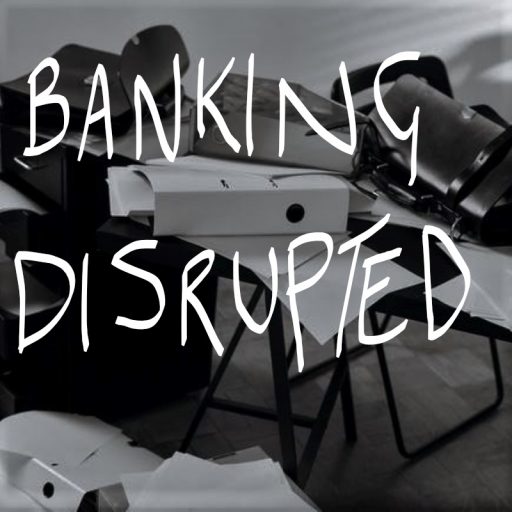It is a universally recognised truth, that change is one of the hardest things to achieve. Despite best intentions, people can become their own saboteur, gravitating towards only seeing the reasons why change cannot happen, and looking for “excuses” not to move forward. In Switch the topic of behaviour in the context of change is examined, where several ideas are explored on how change can be achieved, and what are the circumstances and conditions necessary to allow individuals to achieve their goals successfully.
The authors use the Elephant and Rider analogy introduced by Jonathan Haidt, in his book The Happiness Hypothesis, to explain their findings and insights:
“our emotional side is an Elephant and our rational side is its Rider. Perched atop the Elephant, the Rider holds the reins and seems to be the leader. But the Riders control is precarious because the Rider is so small relative to the Elephant. Anytime the six-ton Elephant and the Rider disagree about which direction to go, the Rider is going to lose. He’s completely overmatched…changes often fail because the rider simply can’t keep the elephant on the road long enough to reach the destination”
The emotional side is always looking for a quick fix, thinking about immediate short-term gains as opposed to the longer-term picture. In the analogy the Rider is the rational side of the brain, the thinking mind that knows what needs to be done. Often the rational side can steer the emotional side for a short period of time, but the challenge comes as the emotional side, the Elephant, is so much stronger than the rational side or the Rider.
Hence, will-power or self-control, which is a finite and exhaustible resource, is not enough in its own right to effect change. There are 3 factors that need to come into play to make change more viable, and easier to instigate:
- Direct the rider – set clear directions and objectives
- Motivate the elephant – incentivise the behaviour, appeal to the emotional side, which is more purpose-led to create meaning
- Shape the path – make it easier to stick to. If you want to work out daily, don’t join a gym 20 miles away
Big Message/ Key Quotes:
- Find the bright spots i.e., the ideas that work and replicate them– Most change agendas start with analysis, and this can almost be part of the problem. Analysis paralysis coupled with focusing on issues to overcome, can steer individuals in a direction to avoid problems as opposed to get clear focus on which activity to drive. One of the best examples given here is a case study on Xolair, a miracle drug for asthma sufferers, where despite the obvious medical benefits sales were very much lower than expectations. Richard Pascale, who was consulting on this dilemma discovered the following:
“they immediately started looking for bright spots and soon found one: Two saleswomen who worked for the Dallas-Fort Worth area were selling 20 times more Xolair than their peers. Further investigation revealed that the women were using a fundamentally different kind of sales pitch. Rather than selling the health benefits of the drug – which doctors largely understood – they were helping doctors understand how to administer the drug. Xolair was not a pill or an inhaler; it required infusion via an intravenous drip. This technique was unfamiliar (and therefore Elephant-spooking) to the allergists and paediatricians who would be prescribing the drugs”
Logic would dictate that finding this bright spot and sharing with others would help other sales agents. This was not the case, and instead the results were questioned, so a powerful learning here, never under-estimate the Riders propensity for over analysis…even when the answers are obvious!
- Script the critical moves – This is a fundamental re-frame when is comes to working out how to change. This means parking the bigger picture and diverting focus to smaller actions that support the overall desired outcome. One of the examples given is on how to get people to drink 1% milk with the aim of being healthier. The fastest way to help people make this switch, is based on the principle that people will just grab what is in their fridge and drink it. The action here needs to be how to get the milk into the fridge, so the plan needs to become on how to get consumers to purchase the milk
- Point to the destination – as Riders are prone to continuous analysis, one of the best ways to avoid an elongated assessment on how to get going, is to set out a compelling destination or result. The destination also needs to be an attractive prospect to motivate both the Rider and the Elephant to get there. Using tools like destination postcards, a colourful and energising picture of the near future, can be very motivating when it comes to keeping both Riders and Elephants on track
- Find the feeling – the ability to just intellectually know something, is not enough to act as an agent for change. It is essential to ensure that people emotionally connect with what is required. When Jon Stegner was trying to drive better efficiency across the purchasing department, he did not use data and analytics to illustrate the challenge. He instead opted to “show” the excessive variety of gloves being purchased from difference suppliers, through piling these up for all to see…this landed the point faster than any graph or pie chart. Most were shocked to the extent of the problem, hence were exceptionally motivated to fix it
- Shrink the change – bite size chunks normally work much better than The Big Bang approach when it comes to driving change. Large goals can often look so daunting, they result in demotivation, which means most change journeys end there. NFL coach Bill Parcells shares this insight from his two Super Bowl wins:
“In training camps, therefore we don’t focus on the ultimate goal – getting to the Superbowl. We establish a clear set of goals at all within immediate reach we’re going to be a smart team; we’re going to be a well-conditioned team; we’re going to be a team that plays hard; we’re going to be a team that has pride; we’re going to be a team that wants to win collectively; we’re going to free a team that doesn’t criticise one another. When we start acting in a way that fulfils these goals I am sure everybody knows that. I accentuate the positive at every possible opportunity and at the same time I emphasise the next goal that we need to fulfil ……when you set small , visible goals and people achieve them, they start to get into their heads that they can succeed. They break the habit of losing and begin to get into the habit of winning”
- Grow your people – how individuals and teams understand the growth mindset is required to drive meaningful and successful change. People also need to see change in the context of their identity. When working on community programmes that don’t have perceived immediate economic benefits, if individuals see themselves as concerned citizens, they are more likely to support the change. If your identity is “I am a health freak” then again you are more likely to stick to a well-being regime over the longer term
- Tweak the environment – Quite often it is better to change the situation to reflect that other changes in behaviour have taken place. The environmental factors that come into play here do not fundamentally change the nature of the path being taken, but just helped make staying on the path a lot easier. The key analogy here is if you want somebody to stick to a trail it is much better to use signposts to help them navigate their journey better. The easier you make the environment the easier it becomes to achieving the game plan. When banks became frustrated with customers leaving their cards in ATM machines, they “tweaked the environment” by changing the cash withdrawal process; now cash machines force you to remove your card before you can take your cash away…problem solved
- Build habits – when we think of the fact that willpower and self-control are exhaustible resources, it is better to try and establish how rituals and habits can be created as a way of keeping change on track. Therefore, several change programmes seen in the working environment use checklists to get individuals acclimated to the new process, product, design, or procedure. These checklists help in creating routine, hence habits. Using action triggers is another useful tool for creating habits, e.g. going to the gym after dropping the children at school
- Rally the herd – It is the nature of humans to be herd-creatures, in that they have a predisposition to emulate others. As an example, when visiting somewhere new, it is common to watch what others are doing to gleam behavioural cues i.e., even small stuff like which fork to use for each course at dinner in a restaurant. Behaviour is contagious….. one person starts clapping at the end of an unplanned moment, quite frequently others will follow, in the main people enjoy following a leader. Hence, if you can make it appear that others have made the change, it will inspire emulation, and motivate others to change
Why read this book?
A great book for anyone struggling with implementing change across their professional and personal life. Some great insights into why change is hard, and how some of these factors are nothing to do with self-control and willpower. The authors provide many case studies to enhance comprehension and give ideas on how to get the change process started, and then maintain that over the longer term. A real little gem of a read, which should grace every bookshelf and kindle/audiobook app!




